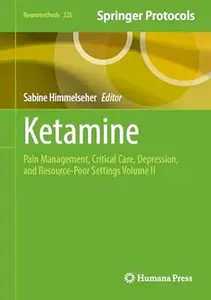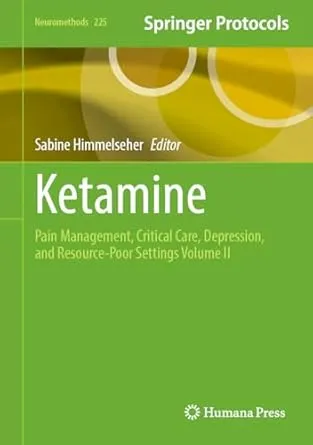Ketamine: Pain Management, Critical Care, Depression, and Resource-Poor Settings Volume II
English | 2025 | ISBN: 1071645986 | 428 Pages | PDF (True) | 26 MB
English | 2025 | ISBN: 1071645986 | 428 Pages | PDF (True) | 26 MB
Ketamine: Pain Management, Critical Care, Depression, and Resource-Poor Settings, Volume II discusses the latest advances in neuroscientific, translational, and clinical research, as well as practical applications of the essential drug racemic ketamine and its enantiomers esketamine and arketamine. In addition to emphasizing ketamine’s benefits in the management of perioperative and chronic pain, Volume II describes the substances‘ importance and potential for specific situations in intensive and neurocritical care, such as difficult sedation in seriously ill COVID-19 patients. The immense clinical improvements achieved with racemic and es- ketamine in patients with major depressive disorders and those who have not responded to other antidepressant treatments are highlighted, and practical treatment regimen are presented. Beyond, ketamine’s potential utility in other severe mental health issues such as substance use disorders is described. It is very important to note ketamine’s unique significance for healthcare provision in resource-constrained countries and situations of war and disaster, which is another focus of Volume II. The book closes with expert- and evidence-based considerations and prospects regarding ketamine’s role in enhancing medical care in specific circumstances such as in mountain medicine, cardiac anesthesia, and microgravity, for example in the context of a future Mars habitat.



